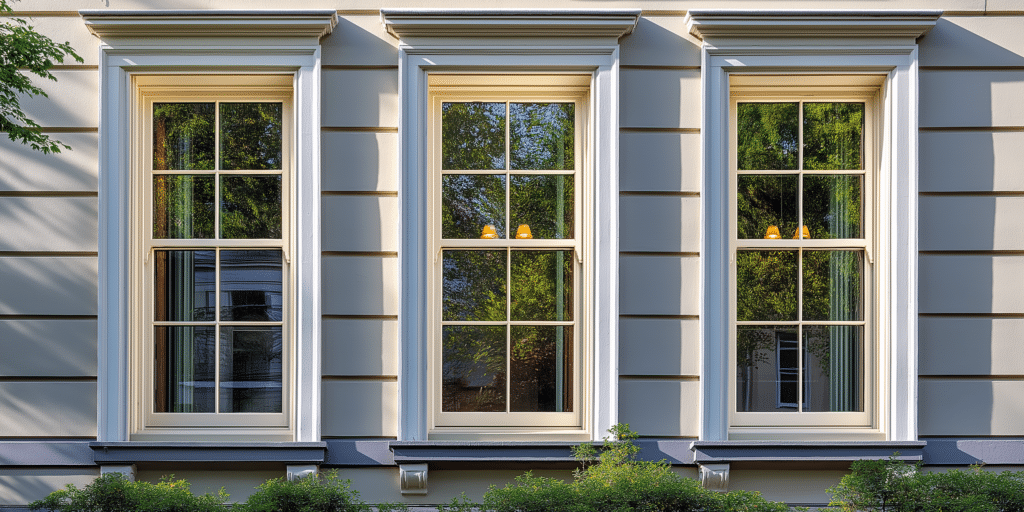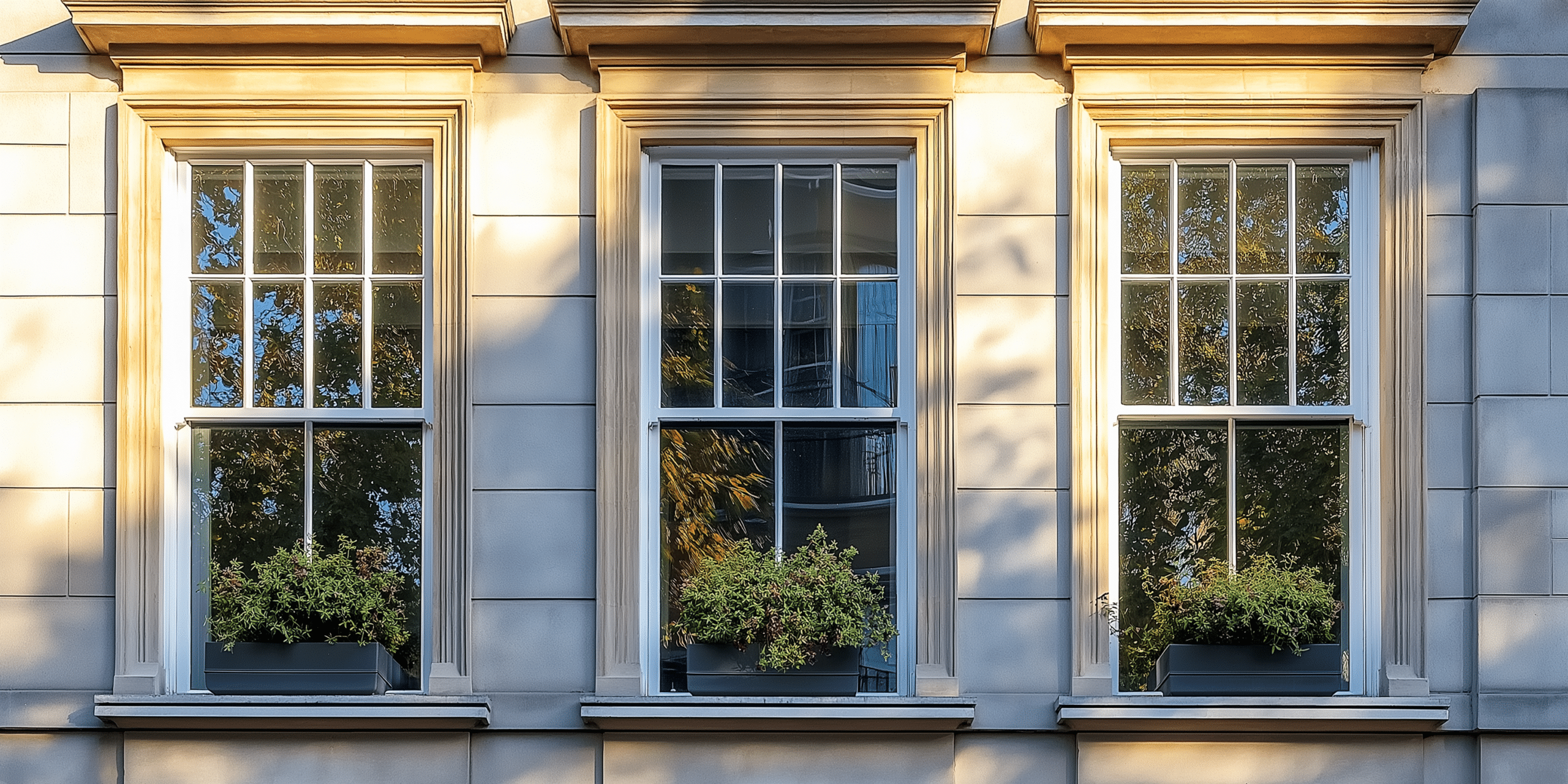Sash Windows Rails: A Comprehensive Guide

Sash window rails are an essential component of traditional sash windows, which have long been a staple in British architecture. These rails, along with other parts of the sash window, contribute to the functionality, aesthetic appeal, and energy efficiency of the window.
- Components: Sash window rails include the meeting rail and the bottom rail, which work together to ensure the window operates smoothly.
- Materials: Common materials for sash window rails include timber, uPVC, and aluminium, each offering varying degrees of durability and insulation.
- Why Are They Important?: Without these rails, the sash window would lose its structural integrity, leading to issues like rattling windows or heat loss. Aluminium and timber sash windows can last over 50 years when properly maintained.
- Purpose: Sash window rails not only support the window structure but also help in ensuring energy efficiency, weatherproofing, and security.
The Role of the Meeting Rail in Sash Windows
The meeting rail is the part of the sash window where the two movable sashes meet when the window is closed. Its placement is crucial for maintaining airtightness and security.
- Positioning: The meeting rail is located horizontally in the centre of the window, providing a seal between the upper and lower sashes. Ralph’s Way notes that proper fitting of meeting rails is crucial to preventing air leaks and optimising energy efficiency.
- Weatherproofing: Meeting rails often include draught strips or seals to prevent air from entering the home, thus improving the window’s insulation.
- Security Features: Meeting rails may include locking mechanisms to enhance security, especially for ground-floor windows.
- Common Materials: Typically made from timber or uPVC, the material choice will impact the window’s longevity and energy efficiency.
What Is a Bottom Rail in a Sash Window?
The bottom rail refers to the lower horizontal component of the sash window frame. This rail is often thicker than the other parts of the frame to provide additional support.
- Functionality: The bottom rail supports the weight of the window and helps ensure the window can be easily opened and closed.
- Thickness: The bottom rail is typically thicker than the top rail to balance the weight distribution in the window. Studies from Fine Homebuilding emphasise the need for precision when cutting bottom rails to ensure proper balance.
- Materials: Bottom rails can be made from timber, composite materials, or uPVC, offering options for durability and aesthetic preferences.
- Maintenance: To prolong the life of the bottom rail, regular maintenance, such as painting or sealing, is essential to prevent moisture ingress and warping.
Types of Sash Window Rails: An Overview

Sash window rails come in various types, depending on the window’s style and the materials used. Each type has unique properties and use cases.
- Timber Rails: Traditionally used in period homes, timber sash window rails offer a classic look but require regular maintenance to prevent rotting. Patchett Joinery notes that properly treated timber can last up to 100 years in heritage homes.
- uPVC Rails: uPVC rails are popular for their low maintenance and energy efficiency. They are commonly used in modern sash window installations and can provide a 40% improvement in energy efficiency compared to single-pane timber windows.
- Aluminium Rails: Aluminium sash window rails are strong and durable, making them ideal for commercial properties or areas with harsh weather conditions.
- Composite Rails: Combining the best of timber and uPVC, composite sash window rails offer the aesthetic appeal of wood with the low-maintenance benefits of uPVC. These are a growing choice for eco-conscious homeowners.
How to Install Sash Window Rails: A Step-by-Step Guide
Installing sash window rails is a meticulous process that requires precision. Here’s a step-by-step guide to help you understand the process.
- Step 1: Measure the Frame: Accurately measure the sash window frame to ensure that the rails fit perfectly.
- Step 2: Cut the Rails: Use a saw to cut the rails to the correct size, ensuring that they align with the window frame dimensions.
- Step 3: Fit the Meeting Rail: Secure the meeting rail between the two sashes, ensuring that it is level and properly aligned with the stiles. This step is essential to maintaining the window’s draught-proofing capabilities.
- Step 4: Secure the Bottom Rail: Attach the bottom rail to the lower sash using screws or nails, ensuring a tight fit to prevent any movement or rattling.
Common Problems with Sash Window Rails and How to Fix Them
Even well-maintained sash window rails can encounter problems over time. Here are some common issues and their solutions.
- Warping: Timber rails may warp due to moisture exposure. Regular painting or varnishing can prevent this.
- Rattling: If the sash window rails become loose, the window may rattle. This can be fixed by tightening the screws or adding weatherstripping.
- Draughts: Poorly sealed meeting rails can cause draughts, which can be remedied by adding draught excluders or replacing the seals.
- Rot: Timber rails are prone to rot if not properly maintained. Treating the wood with preservatives and ensuring proper drainage around the window can help prevent this. Regular inspections for early signs of decay.
Maintenance Tips for Sash Window Rails

Proper maintenance of sash window rails ensures they last for many years and continue to function efficiently.
- Regular Cleaning: Clean the rails with a damp cloth to remove dirt and dust that could accumulate and cause damage.
- Repainting: For timber rails, repainting every few years protects against weather damage and keeps the wood in good condition.
- Lubricating Moving Parts: Lubricate the sash cords and pulleys to ensure the window operates smoothly.
- Inspect for Damage: Regularly inspect the rails for signs of rot, cracks, or damage, particularly in older windows.
Sash Window Rails in Historical Homes: Preserving Authenticity
Preserving the original features of sash windows, including the rails, is often necessary for heritage properties and listed buildings.
- Restoration: For period homes, it’s important to use materials that match the original style, often requiring custom-made timber rails. Original sash windows can last more than 150 years if properly maintained, preserving both their historical and structural integrity.
- Listed Buildings: Homeowners in listed properties must comply with regulations when replacing or restoring sash windows, often needing to use original materials like hardwood. According to the National Trust, using traditional materials is essential to retaining the building’s historical value.
- Conservation Areas: In conservation areas, maintaining the authenticity of sash windows—including the rails—is crucial to preserving the architectural integrity of the building. The Victorian Society highlights that improper replacements can reduce a property’s value by up to 20% due to the loss of historical authenticity.
- Specialist Suppliers: Look for suppliers specialising in historical window restoration to ensure authenticity in the replacement or restoration of sash window rails.
The Aesthetic Importance of Sash Window Rails
Beyond their functional role, sash window rails contribute significantly to the windows and the property’s overall aesthetic.
- Symmetry: The placement of the meeting rail creates a symmetrical design, which is key to the traditional look of Georgian and Victorian homes. Architectural Digest has emphasised that these details contribute significantly to the property’s curb appeal and overall aesthetic cohesion.
- Custom Designs: Rails can be customised in terms of thickness, material, and colour to suit modern or period properties. Many clients prefer bespoke designs to retain the charm of period homes while upgrading their functionality.
- Enhancing Kerb Appeal: Well-maintained sash windows, complete with neat, well-fitted rails, can significantly boost the kerb appeal of a property. Estate agents report that homes with well-preserved period features, such as sash windows, often command a 10-15% premium on the property market.
- Period Details: Rails are often one of the defining features of period homes, adding character and elegance to the façade.
Upgrading Sash Window Rails: When and How

At some point, you may need to upgrade your sash window rails to improve functionality, energy efficiency, or aesthetics. But when is the right time to do so?
- Signs of Wear: If your sash window rails are showing signs of wear, such as cracks or rot, it may be time to upgrade them. Check your windows every five years for signs of deterioration to prevent structural damage.
- Energy Efficiency: According to the British Fenestration Rating Council, upgrading to modern materials like uPVC or installing double-glazed sash windows can improve energy efficiency and reduce heat loss by up to 40%.
- Aesthetic Enhancements: If you’re updating your home’s look, consider upgrading the rails to match the new style, whether it’s a modern or period design. New rails can be custom-fitted to match modern design trends without compromising on the historical authenticity of older homes.
- DIY vs Professional: While minor repairs can be done as a DIY project, upgrading sash window rails is best left to professionals, especially in older or listed buildings. Improper installation of rails can lead to misalignment, impacting the window’s functionality and security.
Final Thoughts on Sash Window Rails
Sash window rails are a vital component of both the aesthetic and functional aspects of sash windows. Whether you’re installing new sash windows, upgrading existing ones, or maintaining period features, paying attention to the quality, material, and maintenance of the rails will ensure your windows remain in excellent condition for years to come.
By understanding the importance of sash window rails and knowing how to maintain, repair, and upgrade them, homeowners can ensure their sash windows continue to provide security, energy efficiency, and beauty.
For those looking to upgrade or restore their sash window rails, consulting with specialists and choosing high-quality materials are essential steps in ensuring long-term durability and performance. Authentic materials and precision craftsmanship are the keys to preserving both the history and efficiency of your sash windows.




